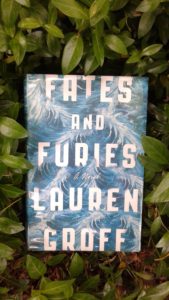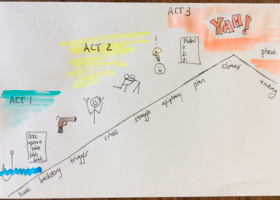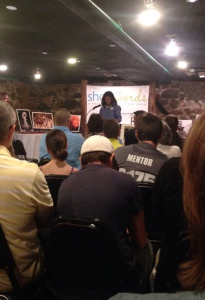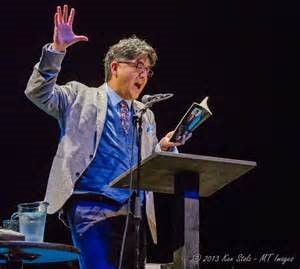Then, play it again.
 Readers of Fates and Furies find a big story of modern marriage and relationship wrapped between the covers of this National Book Award Finalist. Lauren Groff’s novel offers a wealth of literary resources with her creative reinvention of structure, style and character. This three part analysis begins with storytelling and structure.
Readers of Fates and Furies find a big story of modern marriage and relationship wrapped between the covers of this National Book Award Finalist. Lauren Groff’s novel offers a wealth of literary resources with her creative reinvention of structure, style and character. This three part analysis begins with storytelling and structure.
The Straight Line – Sequential Plot
Lancelot, nicknamed Lotto, tells his story for the first half of the book, almost two hundred pages in this four hundred page novel. In The Detroit Free Press published interview, Lauren Groff refers to her story as a tale of privilege. Let me count the ways that Lotto is privileged. First, he has fortune when he needs it and choses to surrender his fortune for his desires. Second, he has success. Maybe he was lucky or worked hard. Or maybe he fits the description of privilege – well educated, wealthy, male and white. Third, characters surround him, offer support and champion his cause – especially his wife. These factors propel Lotto’s story to the forefront and the first half of the book.
The point of view begins omniscient as the reader sees the first married union of Lotto and Mathilde – lest it be thought that the entire story is about Lotto. From there, the point of view shifts to a deep third in Lotto’s point of view. His story dips back to his birth with a clever device of repeating a story told many times to him. Time moves forward with Lotto’s perceptions dominating the story of his friends, his dreams and his marriage to mystery woman, Mathilde.
The Jagged Line – Fractured Plot
Mathilde, the wife, encourages readers to identify with her rage. Let me count the ways that Mathilde is angry. First, as a child, she is blamed for a deadly mean streak, shamed and never forgiven. Her survival depends on distant relatives who have no concern for her wellbeing. Second, egotistical and pretentious Lotto is the best part of her life, and without him, she is the devastated widow – her education and hard work unraveled without her center, her husband. Third, Mathilde believes she is “the interesting one.” Mathilde’s past is an example of the writer pushing a character to the outer limits of believability. Themes of inequality thread through the novel. In Lotto’s point of view, he blindly accepts Mathilde’s lack of family and friends. Mathilde’s half of the novel, another two hundred pages, tells her scrambled tragic version of her life story.
Mathilde’s narration alternates between her angry widow world and chapters revealing her past and the formation of her values and beliefs. Mathilde selectively takes the reader through her childhood slowly opening the doors to understand her motives. Mathilde’s mean streak dots every chapter for the reader. Her only softness comes for the man she marries, and he is not spared from her passive aggressive ways.
Play It Again – Story Arc
Throw the traditional story arc in the trash for this novel except that Lotto’s half of the book is fairly traditional. Mathilde’s point of view jumps back in time and returns to her widowed agony almost like a zigzag across a graph of time. Unlike parallel plots, this story challenges even the most ambitious of screenwriter. For example, The Girl on the Train uses multiple points of view, slowly revealing a suspenseful and complicated plot arc. And hence, bestseller becomes screenplay and film. Some stories succeed with repetition – a retry of the same idea like the “back to square one” game – as used in the movie, Groundhog Day, and new Sci-fi film, Edge of Tomorrow; Live, Die, Repeat. Each repetition moves the story one step further.
Groff’s repetition, however, drills beneath what the reader assumed was the true story. For every major event in Lotto’s life, the reader now sees the hand of Mathilde. Her callous placement of an obituary notice punishes Lotto for his abandonment. She deliberately denies Lotto the children he wants. And Mathilde leverages everything to make her husband and his plays successful. In Mathilde’s story, vengefulness and anger are ever present – from the bruising of a teasing schoolmate to the personal and financial destruction of Lotto’s best friend.
In her interview, Groff states she planned to publish the two stories separately. The two halves together form a rich comparison in structure, style and character. The next post “It’s Greek To Me” will examine Groff’s style and literary references. After that, a third post will explore character and the human psychology of relationship and attraction. As seen in structure, marriage “For Better or For Worse” is a risky endeavor.


